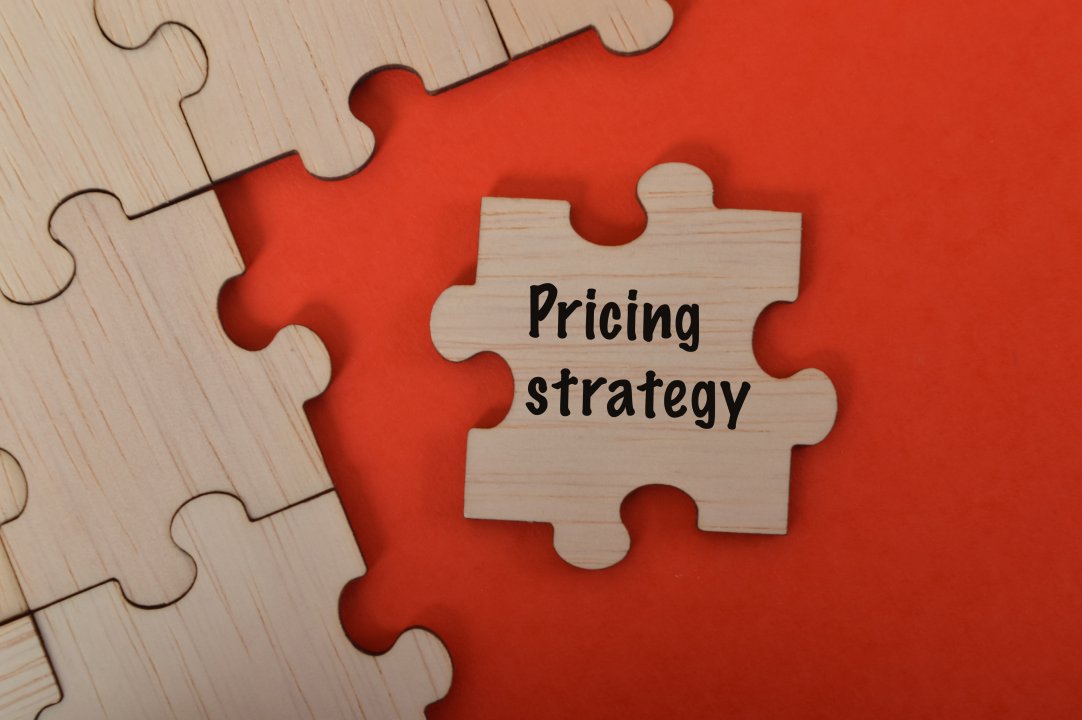In today’s competitive business environment, it is essential for companies to have a thorough understanding of their financial performance and profitability. One tool that can provide valuable insights into the financial health of a business is break-even analysis. Break-even analysis is a powerful technique that allows companies to determine the point at which their revenue equals their costs, resulting in neither profit nor loss.
In this blog post, we will explore the advantages of break-even analysis and how it can benefit businesses of all sizes.
What is a Break Even Analysis?
Break-even analysis is a financial technique used by businesses to determine the point at which total revenue equals total costs, resulting in neither profit nor loss. It identifies the specific level of sales or production volume required for a business to cover all its costs. At the break-even point, a company’s net income is zero.
The analysis considers two main types of costs: fixed costs and variable costs. Fixed costs are expenses that remain constant regardless of the level of production or sales, such as rent, salaries, and insurance. Variable costs, on the other hand, fluctuate in direct proportion to the level of production or sales, such as raw materials, direct labor, and commissions.
What are the Advantages of Break Even Analysis?
1. Understanding Cost Structure
One of the primary advantages of break-even analysis is that it helps businesses gain a deeper understanding of their cost structure. By analyzing fixed costs and variable costs, businesses can identify which expenses are essential for operations and which are discretionary. This insight enables companies to make informed decisions about cost control, budgeting, and pricing strategies.
For example, break-even analysis can reveal the breakeven point in terms of units or sales revenue. This information is invaluable for determining how many units need to be sold or how much revenue needs to be generated to cover all costs and avoid losses. By knowing these figures, businesses can set realistic sales targets and adjust the selling price of their products or services appropriately to achieve profitability.
2. Evaluating Profitability
Another advantage of break-even analysis is its ability to evaluate profitability. By comparing actual sales and revenue with the breakeven point, companies can determine whether they are operating at a profit or a loss. This information allows management to assess the financial health of the business and make informed decisions regarding growth strategies, cost management, and investment opportunities.
For instance, if a company’s actual sales are consistently above the breakeven point, it indicates a healthy level of profitability. On the other hand, if sales consistently fall short of the breakeven point, it signals potential financial difficulties. By closely monitoring this data, businesses can take proactive measures to improve profitability, such as adjusting pricing strategies, reducing costs, or exploring new markets.
3. Sensitivity Analysis
Break-even analysis also enables businesses to conduct sensitivity analysis, which assesses the impact of changes in key variables on the breakeven point and profitability. By manipulating variables such as sales volume, pricing, and costs, companies can evaluate the potential effects on their financial performance.
Sensitivity analysis helps identify the critical factors that influence profitability and allows businesses to develop contingency plans. For example, a company may simulate the impact of a decrease in sales volume due to changes in market demand. By knowing the breakeven point under various scenarios, management can better prepare for potential risks and take appropriate actions to mitigate their impact.
Ready to empower your business decisions with break-even analysis?
Contact Growth Hackers
4. Decision Making and Strategy Formulation
Break-even analysis is an invaluable tool for decision-making and strategy formulation. It provides businesses with quantitative data and insights that can guide important decisions regarding pricing, production levels, cost control, and investment opportunities.
For instance, break-even analysis can assist in determining the feasibility of launching a new product or service. By estimating the breakeven point for the new offering and considering factors such as market demand, production costs, and pricing strategies, management can assess the potential profitability of the venture and make an informed decision.
Similarly, break-even analysis can help companies evaluate different pricing strategies. By understanding the relationship between pricing, costs, and breakeven point, businesses can set prices that maximize profitability while remaining competitive in the market.
5. Performance Monitoring and Control
Break-even analysis serves as a valuable tool for monitoring and controlling performance. By comparing actual results with projected breakeven points, businesses can assess their performance and take corrective actions when necessary.
For example, if a company’s sales fall below the breakeven point, it may indicate a need to revise the marketing strategy, increase sales efforts, or reduce costs. By regularly analyzing the breakeven point and related metrics, businesses can proactively identify issues and implement corrective measures to improve revenue performance.
6. Financial Forecasting and Planning
Break-even analysis plays a crucial role in financial forecasting and planning. By projecting future sales, costs, and breakeven points, businesses can create realistic budgets, set achievable targets, and develop effective strategies.
Financial forecasting allows companies to anticipate potential challenges and opportunities, enabling them to allocate resources effectively and plan for growth. By incorporating break-even analysis into their forecasting models, businesses can evaluate the financial impact of different scenarios and make data-driven decisions.
7. Risk Assessment and Decision Making
Break-even analysis helps assess the risk associated with different business decisions. By determining the breakeven point, management can evaluate the level of sales or production volume required to cover costs and avoid losses. This information assists in assessing the feasibility of new projects, expansions, or changes in the business model. It provides a quantitative basis for decision-making and helps management identify potential risks and rewards.
8. Pricing Optimization
Break-even analysis is instrumental in optimizing pricing strategies. By understanding the relationship between costs, sales volume, and profitability, businesses can set prices that maximize revenue and achieve desired profit margins. It helps in identifying the minimum sales price necessary to cover costs and guides pricing decisions to remain competitive while maintaining profitability.
9. Profit Margin Analysis
Break-even analysis allows businesses to assess their profit margins at different levels of sales or production. By comparing the breakeven point with actual sales, companies can evaluate the extent to which they are operating above or below the breakeven level. This analysis provides insights into the profitability of each unit sold and helps management focus on improving profit margins by reducing costs, increasing sales, or enhancing efficiency.
10. Cost Management and Efficiency
Break-even analysis enables businesses to identify areas of cost inefficiencies and manage fixed or variable costs effectively. By differentiating between fixed and variable costs, companies can evaluate the impact of cost reduction measures on the breakeven point. It helps in prioritizing cost-saving initiatives and improving operational efficiency. Businesses can identify cost drivers, negotiate better deals with suppliers, optimize production processes, or explore outsourcing opportunities to lower costs and improve overall financial performance.
11. Benchmarking and Performance Comparison
Break-even analysis allows businesses to benchmark their performance against industry standards or competitors. By comparing their breakeven point, sales volume, or pricing strategies with industry averages, businesses can assess their relative competitiveness and identify areas for improvement. It provides a reference point for evaluating performance and supports continuous improvement efforts.
12. Capital Planning and Investment Evaluation
Break-even analysis is valuable for assessing the financial feasibility of capital investments and evaluating investment opportunities. By incorporating projected costs, sales, and breakeven points into investment evaluations, businesses can make informed decisions regarding new equipment purchases, expansions, acquisitions, or other capital-intensive projects. It helps determine the expected return on investment (ROI) and supports capital planning and allocation decisions.
13. Communication and Stakeholder Engagement
Break-even analysis provides a clear and concise way to communicate financial information to stakeholders. Whether it’s presenting financial projections to investors, discussing pricing strategies with customers, or providing insights to internal teams, break-even analysis simplifies complex financial concepts and facilitates effective communication. It helps stakeholders understand the financial implications of business decisions and fosters transparency and trust.
Harness the advantage of informed choices – start with break-even analysis today!
When Is a Break-Even Analysis Needed?
Break-even analysis is typically conducted in various situations throughout the life cycle of a business. Here are some common scenarios when a break-even analysis is done:
1. Business Planning and Start-up
Break-even analysis is often performed during the business planning phase, especially when starting a new venture. It helps determine the minimum sales volume or revenue needed to cover costs and achieve profitability. By conducting a break-even analysis early on, entrepreneurs can assess the feasibility of their business idea, set realistic goals, and make informed decisions regarding pricing, costs, and funding requirements.
2. New Product or Service Launch
When introducing a new product or service, businesses commonly conduct break-even analysis to evaluate the financial viability of the offering. By estimating the breakeven point in terms of units or sales revenue, companies can assess the level of sales required to cover costs associated with production, marketing, and distribution. This analysis helps in setting pricing strategies, forecasting sales targets, and evaluating the potential profitability of the new offering.
3. Operational Reviews and Performance Monitoring
Break-even analysis is regularly performed as part of operational reviews and ongoing performance monitoring. It helps management track the financial health of the business by comparing actual sales and costs with the breakeven point. This analysis allows businesses to assess their profitability, identify areas for cost reduction or efficiency improvement, and take corrective actions to maintain or enhance financial performance.
4. Price Setting and Strategy Evaluation
When businesses need to determine optimal pricing strategies, break-even analysis plays a crucial role. By considering the breakeven point, along with market demand and competitive factors, companies can evaluate different pricing scenarios and their impact on profitability. This analysis assists in setting prices that cover costs while remaining competitive in the market.
5. Investment and Capital Expenditure Evaluation
Break-even analysis is used to evaluate the financial feasibility of investments and capital expenditures. It helps determine the point at which the projected returns from an investment will cover the associated costs and generate a profit. By comparing the breakeven point with expected sales or revenue, businesses can assess the risks and rewards of investment opportunities and make informed decisions regarding resource allocation.
Remember that break-even analysis is not a one-time exercise. It should be regularly reviewed and updated as business conditions change, market dynamics evolve, or costs fluctuate. By conducting break-even analysis at appropriate intervals, businesses can stay informed about their financial performance and make necessary adjustments to optimize profitability and ensure long-term success.
Final Thoughts on the Advantages of Break Even Analysis
Break-even analysis is a powerful financial technique used by businesses to determine the point at which total revenue equals total costs. It can help understand cost structure, evaluate profitability, access sensitivity analysis, and make informed decisions about pricing, production levels, cost control, and investment opportunities. It also enables performance monitoring and control, financial forecasting and planning, risk assessment and decision-making, pricing optimization, profit margin analysis, cost management, and efficiency.
Now, is your business stuck in a rut? Want to become an industry leader and take advantage of the latest trends and tools? Look no further than Growth Hackers, the award-winning agency that specializes in sustainable and scalable growth. We’re not just consultants or coaches – we’re your growth partners who get results.
Here at Growth Hackers, results are our top priority. We don’t settle for anything less than the best. Unlike traditional marketing agencies, we use cutting-edge strategies developed in-house to ensure your business experiences real growth. Whether you need more leads, targeted website traffic, increased sales, a stronger brand, higher conversions, or user acquisition/retention, we’ll work closely with you to achieve your goals.
Choose Growth Hackers and start growing your business today.








1 Comment
Break-even analysis has always been a bit of a puzzle for me, but your article broke it down into easily understandable pieces. I loved how you highlighted the importance of this analysis in making informed business decisions and how it serves as a powerful tool for entrepreneurs.